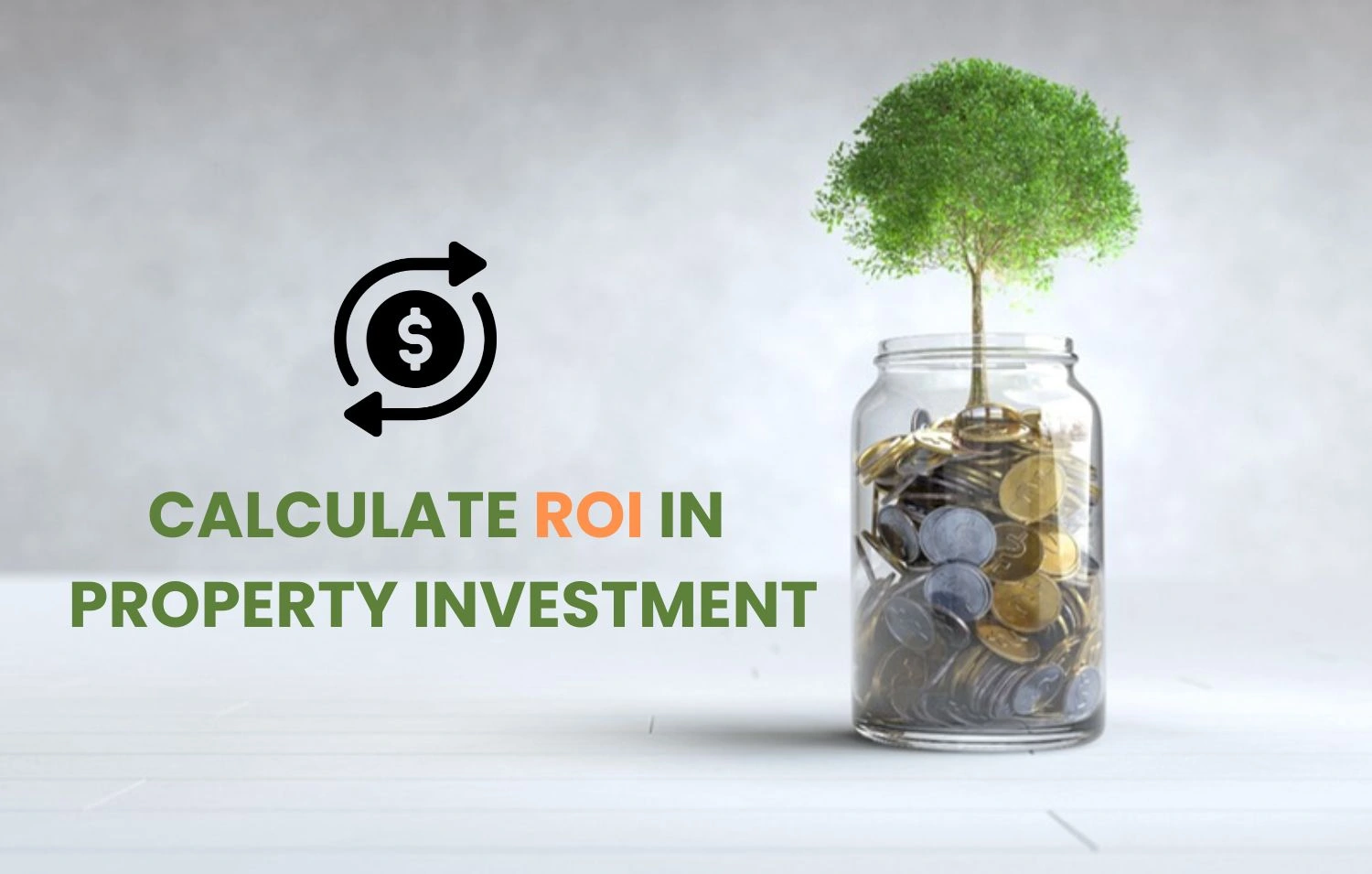Real estate is often viewed as a profitable investment, particularly in a growing market like India. However, before you jump in, it’s important to understand your potential Return on Investment (ROI). Knowing your ROI helps you gauge whether a property will deliver the financial returns you expect, allowing you to make more informed decisions.
In this guide, we’ll walk you through how to calculate ROI for property investments in India, in a simple and easy-to-understand way. Let’s get started!
Table of Contents
What is ROI in Real Estate?
ROI is a performance metric used to evaluate the profits and efficiency of an investment over a period. It is calculated as a percentage and shows how much profit you can make on the money invested. In real estate, you can earn ROI in two key ways: through rental income and the rise in property value. But don’t forget, there are also ongoing costs like maintenance, taxes, and management fees to consider.
What makes calculating ROI crucial in real estate?
-
Profitability Assessment: ROI helps you determine whether a property is making enough profit to justify the investment.
-
Investment Comparison: It lets you compare different properties and choose the one with the best potential returns.
-
Risk Management: By factoring in costs and unexpected expenses, ROI gives you a clearer idea of the risks involved.
Financial Planning: By knowing your ROI, you can better plan for your long-term goals and get a sense of the cash flow your investment will generate. When you have an idea about your returns, you make a better choice for your long-term goals and get a good cash flow in the future on your investment.
Steps to Calculate ROI in Real Estate Investment in India
Step 1: Understand the Sources of ROI in Real Estate
There are two main ways to make money from real estate investments:
Before you invest in real estate, make sure you have a solid idea of the returns you’ll earn over time.
-
Rental Yield: Rent comes from renting the property and rental yield is the benefit that you get after paying all the necessary expenses like maintenance, taxes, and other charges.
-
Capital Appreciation: This is the profit you make when the property’s value increases over time, allowing you to sell it for a higher price.
To get a better sense of how your property is performing, it’s a good idea to calculate both types of ROI.
Step 2: Calculate Annual Rental Yield
Calculating rental yield is one of the simplest ways to assess ROI, especially if you’re buying property to rent out. Here’s the formula to calculate rental yield:
Rental Yield Formula:
-
Annual Rental Income: It's the total amount that you earn from renting property in a year.
-
Total Property Cost: It's the total amount that you paid while purchasing the property.
Example:
Bought a property for ₹50 lakhs and rented it for ₹25,000 per month:
So annual rental income will be ₹3 lakhs (₹25,000 × 12 = ₹3,00,000)
Rental Yield
In many Indian cities, a rental yield of 6% is considered solid, but this can change depending on the property's location and its type.
Step 3: Consider Property Appreciation (Capital Gains ROI)
While rental yield gives you a measure of income, capital appreciation measures how much the property's value increases over time. In India, real estate appreciation can be significant, especially in prime locations and growing cities.
Capital Gains ROI Formula:
To calculate Capital Gains ROI:
Current Property Value: The price of the property when you sell it.
Purchase Price: The price you paid for the property.
Example:
Let's say you bought a property for ₹50 lakhs, and after 5 years, its value increased to ₹70 lakhs.
This means your investment grew by 40% over 5 years because the property's value increased.
Step 4: Factor in Additional Costs and Expenses
To get an accurate ROI, you must account for all the associated costs of owning real estate. Some of these include:
-
Property Taxes: Taxes can vary depending on the state and local government.
-
Maintenance Costs: Ongoing maintenance and repairs can eat into your profits.
-
Insurance: Property insurance is an essential expense to protect your investment.
-
Property Management Fees: If you hire a property manager, don’t forget to include their fees.
-
Loan Interest: If you have a mortgage, the interest payments should be deducted from your rental income.
The formula for Net ROI:
Step 5: Consider Inflation and Long-Term Market Trends
Real estate in India has the potential for strong long-term capital gains, but factors like inflation and market swings can play a big role.
-
Inflation Adjustment: If you're holding onto the property for several years, inflation can affect the actual purchasing power of your returns. For instance, a property that grows by 7% annually in an inflation-heavy environment might not deliver as much "real" profit as it seems on paper.
-
Market Trends: Make sure to research whether the property is in a developing area. Cities such as Mumbai, Bengaluru, Delhi, and Pune have consistently grown, while tier-2 cities and the outskirts of major metros might experience slower returns initially but could see a rise as urbanization advances.
Step 6: Reviewing Your Returns
Analyzing Your Returns is essential. Before investing in property, it's important to weigh your potential ROI against other options such as mutual funds, gold, or other assets. Real estate in India can deliver strong long-term returns, but it’s not always the most liquid investment it could take months to sell a property and access cash. If you’re looking for quicker liquidity, you may want to consider other investment avenues.
Key Factors to Keep in Mind
-
Location: Properties in prime locations usually have higher rental yields and greater potential for price appreciation.
-
Market Conditions: The overall market whether it's a buyer's or seller's market can affect both rental income and property values over time.
-
Legal & Regulatory Environment: Double-check that the property has no legal issues and a clear title. The legal side of real estate in India can be tricky, so it’s a good idea to consult a legal professional if you’re unsure.
Leverage: Borrowing money to finance a property can increase your ROI, but it also raises the stakes. A home loan can help you maximize your ROI, but it also brings higher risk. If the market doesn’t do well, paying off the loan might put a strain on your finances.
Final Thoughts
Before making any investment it is important to look after ROI, especially in real estate because it will help you to choose the property wisely. By considering rental yields, capital gains, and factoring in all costs, along with market trends, you’ll be better positioned to make informed, long-term choices. With India’s dynamic real estate market, keeping track of your ROI is critical for successful investing. Wishing you the best in your investments!

